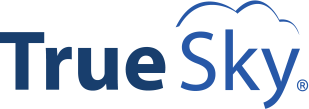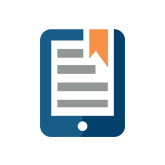5 Components of a Successful Rolling Forecast

For the past several years, businesses of all types have been deciding to either supplement or replace their annual budgets with rolling forecasts.
There are a number of reasons for this. For one, rolling forecasts can offer greater accuracy than an annual budget, which is often out of date within weeks of being put together – if it’s not already out of date when it’s finalized.
For another, rolling forecasts take up far fewer resources than the massive task of putting together an annual budget, which can tie up staff’s time for months on end.
Maybe these factors are part of why you’ve decided that you want to switch to a rolling forecasting model. Now that you’ve made the decision, what components need to be in place for your new method to be a success?
- Buy-in
- People
- Data
- Systems
- Process
When you made the decision to switch to rolling forecasting, you probably had already achieved buy-in from the rest of your finance team. However, if forecasting is going to work for your organization, you need to ensure that the rest of your colleagues and staff are ready to embrace it as well.
That means demonstrating to your staff at large how forecasting will improve not only the company’s success, but also their own workloads. Emphasizing the fact that rolling forecasts will mean staff has to spend less time and, eventually, effort, on putting their numbers together is always a good place to start.
Do you have the right people for the job on your finance team? When you’re switching to something new like forecasting, you need to make sure your people are ready to embrace the changes.
Are they willing to learn what they need to to make the switch a success? Are they able to be evangelists for the new method to other members of the staff? Are they good at seeing the big picture as well as focusing on details as needed? All of these things will influence the success of your rolling forecasts.
When moving to rolling forecasts, having good data is vital. Almost before you do anything else, you need to decide how far out you want to forecast – three months? A year? Longer? Forecasts can be implemented as far as five years out, but only if you have the data to populate them. If not, there’s not much point in trying to forecast that far in advance.
Three-month, or quarterly, forecasts, on the other hand can be a great place for businesses to start. After you and your staff are comfortable with forecasting for this length of time, you may find that you want to move to more frequent forecasts – monthly, perhaps.
If your company is one of the thousands of businesses that continue to use Excel for their finance needs, you’ll need to make a change once you start forecasting. Forecasting using only Excel, as noted by the Geneva Financial Planning and Analysis Club, is nearly impossible.
Instead, business that decide to forecast should really consider moving to a more robust planning and forecasting solution, like True Sky. One of the great things about True Sky is that it is Excel – it’s based in the Excel interface, but offers huge advantages including greater security, real-time updating, and the ability to manage the entire forecasting process through the office of the CFO.
Since forecasting involves many people both inside and outside of finance, it’s essential to establish clear, efficient processes that allow for collaboration and flexibility as needed.
This may involve merely tweaking your old budgeting processes, or it could mean coming up with entirely new ones. It will all depend on what works for you and your company. If you’re using True Sky, you’ll be able to configure your approvals process however you like, and easily involve the people you need to ensure the forecast is completed accurately and on time.
Want to learn more about how to make rolling forecasting work for your company? Check out our post “Making the Switch from an Annual Budget to a Rolling Forecast.”



